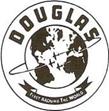Local Service in the Midwest
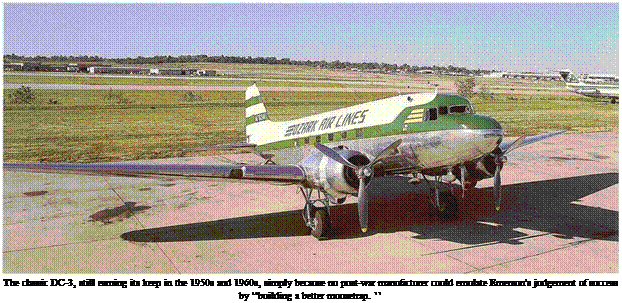 |
 |
![]()
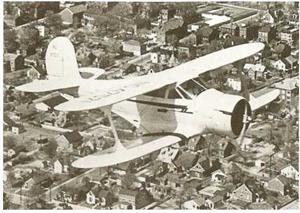
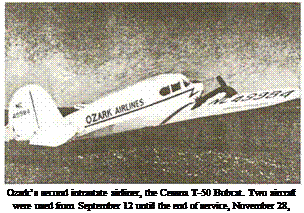
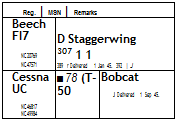 |
The First Ozark Airlines
On 1 September 1943, a Missouri bus operator, Laddie Hamilton, with support from a colleague, Floyd W. Jones, incorporated Ozark Airlines in Springfield. This followed the initiative of L. Welch Pogue, Chairman of the Civil Aeronautics Board, by order dated 22 March 1943, to investigate the possibilities of extending air service “to the nation as a whole, including provision for local service to small communities.”
On 11 July 1944, the C. A.B. permitted operations on a strictly local basis. After sporadic operations with a few Fairchild and Stinson monoplanes, Ozark began scheduled service on 10 January 1945 on a triangular route wholly within the State of Missouri, using at first a couple of Beech F17D “Staggerwings,” and then two Cessna UC-78 twin – engined “Bamboo Bombers.” The whole affair had been somewhat cavalier in its approach, and lasted only until 28 November of the same year, because of apparent irregularities in the registration process.
Parks Air Transport
Meanwhile, another aspirant to operate a local airline was Parks Air Transport, organized by Oliver L. Parks, founder
of Parks Air College at East St. Louis in 1927. On 1 November 1946, it was selected by the C. A.B., in the Mississippi Valley Service Case, to operate a network from Tulsa to Chicago, via St. Louis and other small cities. In July 1949, the Board opened the Parks Investigation Case, as Parks had not opened service. Eventually, on 15 June 1950, Parks Air Lines started to fly from St. Louis to Chicago (see map) on the Inter Urban Grain Belt Route, but it was a case of “too little, too late.” The C. A.B. cancelled Parks’s certificate on 28 July, and simultaneously granted Ozark Air Lines a three-year experimental one.
Ozark Air Lines Begins
The rejuvenated Ozark began operations with a small fleet of Douglas DC-3s on 26 September 1950, taking over the Parks routes and immediately expanding service to almost every small community within a 200-mile radius from St. Louis. Concentrating on connections to, from, and between St. Louis and Chicago, the network reached as far west as Wichita by 1953, and Sioux City by 1955, and as far east as Louisville and Nashville. By the mid-1950s, Ozark was providing good service not only to the small towns but also to every major city in six states of the Midwest.
 |


28 seats • 190 mph
|
|
The Challenger 250
During the post-war period, when the airline industry was developing rapidly on all fronts, there was much talk about the dream of building a replacement for the pre-war twin-engined Douglas DC-3, or the military C-47, that had proved to be a versatile maid-of-all-work.
Several attempts were made by manufacturers to build a replacement, but they were unsuccessful, mainly because thousands of the old DC-3s were still perfectly operational, and threatened to go on for ever. To build a brand-new DC-3, with improvements, was too costly, although a few “Hyper-DC-3s” were tried out. Ozark Air Lines elected to compromise, by extensive modifications to the old Gooney Bird: new wheel-well doors, flush antennas, a new oil-cooler scoop, new wing fillet fairings, aileron gap covers, shorter exhaust stacks, and better engine cowlings. The Ozark DC-3s were called Challenger 250s and although heavier than the standard versions, their aerodynamic improvements gave them an extra 20 mph.
This particular aircraft was built as a DST (see page 41), and was only the sixth DC-3 off the production line in Santa Monica, California. At one time it held the record for being the oldest DC-3 in commercial service. Note the streamlined “Super DC-3” landing gear doors.
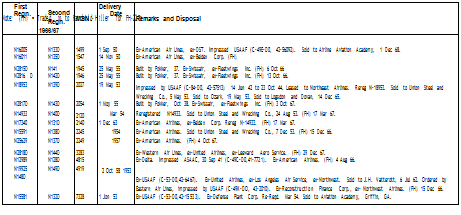 |
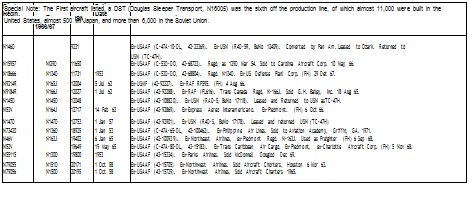 |
OZARK’S DOUGLAS DC-3S











